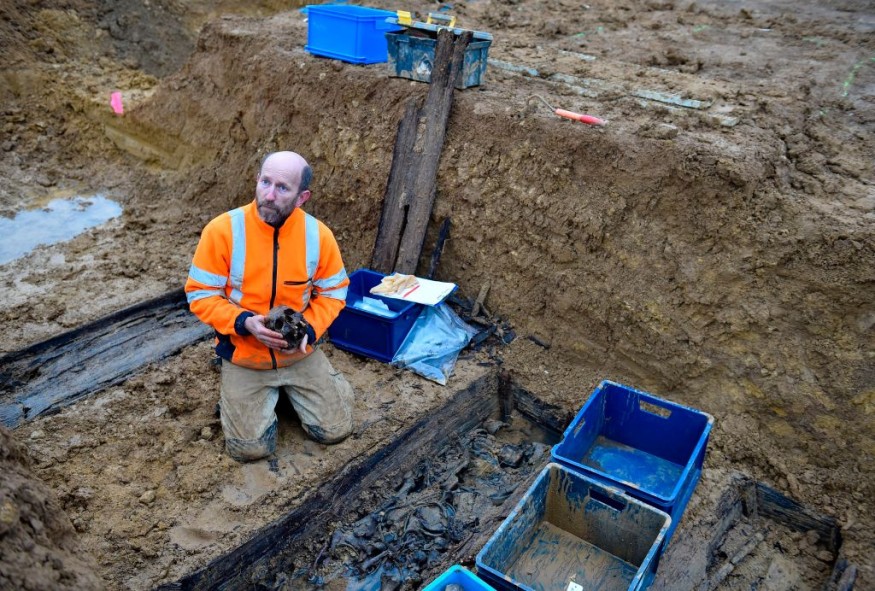A team of archaeologists from the United Kingdom has recently unveiled a Roman-era mercenary buried with his sword, as well as a beheaded skeleton.
As indicated in a ScienceAlert report, the Vale of Glamorgan council in Wales hired Rubicon Heritage Services to analyze a rod they desired to be straightened.
Mysterious Skeleton With Head Placed at Feet Is an Ancient Puzzle We've Seen Before https://t.co/hRfVoP3KAw
— ScienceAlert (@ScienceAlert) April 25, 2022
It resulted in the discovery of a vast trove of archaeological artifacts and hundreds of graves that dated thousands of years back.
In one part of the five-mile road was a collection of Roman artifacts and some skeletons. Rubicon Heritage managing director Mark Collard, who's leading the project said, one is believed to be a mercenary, believed with a huge sword, as well as a military broach, dated to the era that the "Roman Empire fell apart in Britain."

'Container of the Soul'
Close to the area, was another skeleton of a beheaded man, buried with his head by his feet. In 2019, in a Roman graveyard in Suffolk, England, archaeologists discovered the same corpse configuration in 17 beheaded skeletons whose heads had been taken out after death, it is believed.
According to a Business Insider report, the discovery left archaeologists clueless. It stayed a mystery what the practice implied.
Moreover, a theory suggested an association with a pagan belief system of pre-Roman Celtic tribes who regarded the head as the "container for the soul."
The same report indicated that both men in Wales are buried on a huge hill with excellent views over the countryside. One needs to think there must be a reason for that.
A Prehistoric Burial Area
An earlier report from Live Science specified that another excavation portion of the road showed a burial area from a later era which raised as well, a lot of questions.
At the center of the field lies a once-concealed medieval burial ground, unveiled by a team of researchers that holds 450 bodies.
People went back to the burial ground for approximately 500 years, from the sixth to the 13th Century, to bury their loved ones at that site.
The team said it is unusual that they were buried effectively in the middle of the field. More so, it was not near a church.
Also, that is one of the things the researchers were puzzling about the reason people would return for so long to bury humans at the top of this mound.
Detailed Assessment of the Remains
The researchers are embarking on a detailed assessment of the remains, checking for family associations to the bodies, indications of diseases or injuries, or hints about diets.
The researchers behind the excavation have released an e-book that details the project entitled, Five Mile Lane, which is describing what has been discovered so far, including cremations, a 3,000-year-old roundhouse, and an arrowhead from the Bronze Age,
The detailed results are slated for publishing at the end of this year. Collard explained, that archaeologists would always say, they did not expect to discover this much, and in this circumstance, "we really didn't" as the preceding surveys did not raise a lot of hopes.
Nonetheless, it has proven to be an incredibly densely occupied ancient, Roman, and later on, landscape with many activities from 4000 BC to World War II.
Related information about mysterious skeleton discoveries is shown on Origins Explained's YouTube video below:
Check out more news and information on Archaeology in Science Times.









